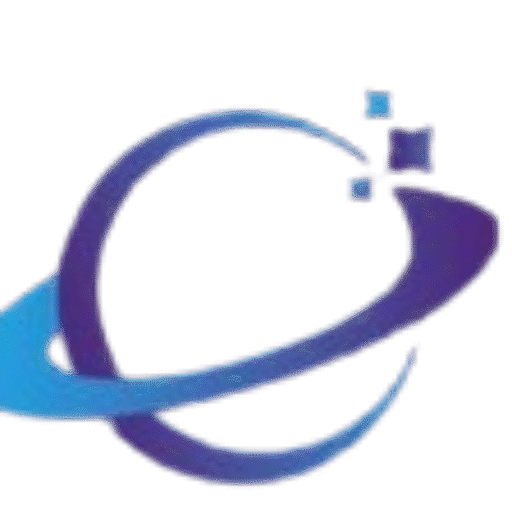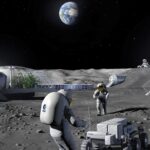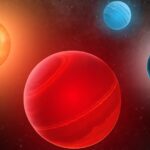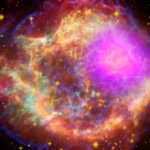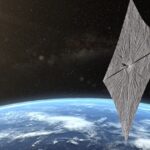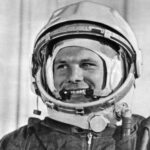In the dark canvas of the night sky, there is a famous group of stars called Orion the Hunter. Just below Orion’s belt, there is a fuzzy patch of light that you can see with your own eyes. This is the Orion Nebula. For a long time, it has been a beautiful sight for people to look at. But for scientists, it is one of the most important places in the universe. It is a giant cloud of gas and dust where new stars are being born. It is a star factory, and it is the closest one to Earth.
The Orion Nebula is a place of incredible activity and beauty. Thanks to powerful telescopes like the Hubble and the James Webb, we can now see deep inside this stunning cosmic cloud to understand what is happening. We can see how stars are born, how planets are made, and what the early universe might have looked like. In this article, we will take a journey inside the Orion Nebula to explore its secrets and discover what makes it so special.
What Is the Orion Nebula? A Cosmic Star Nursery
The Orion Nebula is a huge cloud of glowing gas and dust. It is about 1,300 light-years away from Earth, which is very close in space terms. The nebula is about 24 light-years wide, which is a huge distance. It is also known as Messier 42 or M42.
The nebula is glowing brightly because of the hot, young stars inside it. These stars shine with a very powerful light that heats up the gas around them. This causes the gas to glow, creating the beautiful colors we see in pictures. The pink and red colors come from glowing hydrogen gas, while the blue colors are from dust reflecting starlight.
Scientists call the Orion Nebula a “star nursery” because it is a place where new stars are born from the clouds of gas and dust. The gravity inside the nebula pulls the gas and dust together, and as it gets tighter and tighter, it gets hotter and hotter. Eventually, the center becomes hot enough for a star to start shining. The Orion Nebula is a perfect place to study this because we can see every step of the process, from a cloud of gas to a fully grown star.
The Powerhouse at Its Heart: The Trapezium Cluster
At the very center of the Orion Nebula, there is a group of four very bright, young, and hot stars. This group is called the Trapezium Cluster. They are arranged in a trapezoid shape, which is where they get their name. These stars are the powerhouse of the entire nebula.
The stars in the Trapezium Cluster are much bigger and brighter than our Sun. Their light and their powerful winds are what are shaping the nebula. The light from these stars is so strong that it carves out a giant hole in the gas and dust around them. It is also the light from these stars that makes the nebula glow so brightly, allowing us to see it from Earth. Without the Trapezium Cluster, the Orion Nebula would be a dark, cold cloud of gas and dust.
The Trapezium Cluster is very young, only about 300,000 years old. This is a very short time in the life of stars. This makes it a perfect place for scientists to study how star clusters form.
The Stars of the Nebula: Babies and Adults
The Orion Nebula is home to stars of all ages and sizes. It is a place where you can find brand new baby stars, huge and powerful adult stars, and even “failed stars” that never quite made it.
Baby Stars and Protoplanetary Disks
One of the most amazing things found inside the Orion Nebula are tiny, young stars surrounded by swirling disks of gas and dust. These disks are called protoplanetary disks, or “proplyds” for short. These proplyds are like baby solar systems. They are believed to be the building blocks of planets. Our own solar system probably looked like one of these disks billions of years ago. By studying the proplyds in the Orion Nebula, we can learn about how planets form, not just in our solar system, but all over the universe.
Big, Hot Stars
The nebula has many huge, very hot stars. These stars live fast and die young. They burn their fuel very quickly, and they shine with a very bright, blue light. These massive stars are very important because their powerful light and winds shape the nebula and trigger the formation of other new stars.
Brown Dwarfs: The Failed Stars
The Orion Nebula is also home to a lot of brown dwarfs. A brown dwarf is an object that is bigger than a planet but not big enough to be a star. It doesn’t have enough mass to start nuclear fusion in its core, so it doesn’t shine with its own light like a star. Scientists call them “failed stars.” They are very hard to see, but the James Webb Space Telescope, with its ability to see in infrared, is helping us find and study them.
The Gas and Dust: The Building Blocks of Stars
The Orion Nebula is a mixture of gas and dust. These materials are the raw ingredients for making stars and planets. The gas is mostly hydrogen and helium, which are the most common elements in the universe. The dust is made of heavier elements like carbon, oxygen, and iron.
The gas and dust in the nebula are not just sitting still. They are moving and swirling around. The strong light and winds from the hot stars in the Trapezium Cluster are blowing away the gas and dust. This creates beautiful shapes and pillars, like clouds in the sky. It is in these dense clouds that new stars can form.
The Orion Bar: A Wall of Gas
Inside the Orion Nebula, there is a very interesting feature called the Orion Bar. It is a straight, bright wall of gas and dust. The Orion Bar is a place where a lot of stars are forming. It is being hit by the powerful light from the Trapezium Cluster, and this is causing the gas inside it to be heated up and glow. The Orion Bar is a great place for scientists to study how star formation is affected by the light of powerful, nearby stars.
The James Webb Space Telescope has given us some incredible new pictures of the Orion Bar, showing it in amazing detail. These images are helping scientists understand how the light from the Trapezium stars is shaping this wall of gas and dust and changing the way new stars form.
Why Do We Study the Orion Nebula?
The Orion Nebula is one of the most studied objects in the night sky. The reason is simple: it is like a perfect cosmic laboratory. It is the closest star-forming region to us, which means we can see it in great detail. We can see all the different stages of star and planet formation, from the beginning to the end.
Studying the Orion Nebula helps us understand how our own Sun and solar system were born. Our Sun was born from a similar cloud of gas and dust billions of years ago. By watching new solar systems being formed in the Orion Nebula, we are looking back in time at our own origins. It helps us answer big questions about where we came from and how the universe works.
Conclusion
The Orion Nebula is a truly amazing place. It is a beautiful cloud of glowing gas and dust that we can see from Earth, but it is also a place of great power and activity. Inside, stars are being born, planets are forming, and cosmic winds are shaping the entire nebula. From the mighty Trapezium Cluster that lights up the whole cloud to the tiny “proplyds” that will one day become new solar systems, the Orion Nebula is a constant reminder of how active and beautiful our universe truly is. Its proximity to us makes it a perfect natural laboratory, providing scientists with clues about our cosmic history and our place among the stars.
